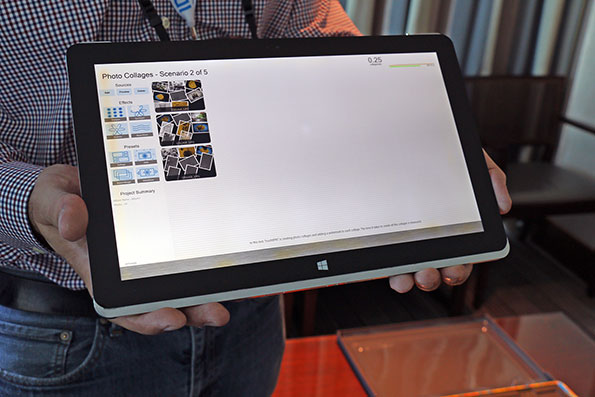First Actual Intel Broadwell Core M Benchmarks From IDF 2014
We’re currently at the Intel Developers Forum checking out all of the technology being showcase by Intel and its partners. Just in case you’ve missed our coverage from earlier in the day amidst all of the Apple news, we’ve got video of Intel’s CEO Brian Krzanich on stage demoing RealSense posted here, in addition to news regarding Intel’s new Android Development Platform for tablets, and the first ever live-demo of the company’s next-gen Skylake platform, next-year’s follow-up to Broadwell, running 3DMark.

Intel Broadwell-Based, 12.5" Tablet
As if that wasn’t enough Intel-news for one day, we just got the scoop on some actual benchmarks run on Intel’s just-released Broadwell-based Core M platform. We’ve gone into detail on Broadwell’s architecture and features here, and discussed expected power and performance characteristics here. But now we can finally show you some cold, hard numbers—not percentage comparisons versus previous platforms. We saw a 12.5” Broadwell-based, Core M 5Y70-powered Windows tablet (a modified version of Intel's Llama Mountain platform) live, and have pictures of the actual benchmark runs.
Here is a shot of the Broadwell-based tablet after running the Cinebench R11.5 multi-threaded benchmark and the OpenGL test. As you can see, the Intel HD Graphics 5300 in the tablet put up 16.96 frames per second. And the tablet's Core M 5Y70 scored 2.48 in the multi-threaded CPU benchmark. Those numbers are both significantly higher than we’ve seen with Atom-based platforms or AMD’s Beema and Mullins chips.
In the SunSpider JavaScript benchmark, the Broadwell-based tablet we saw in action put up a score of 142.8 (with Internet Explorer running under Windows 8.1). That score is significantly better than anything we’ve seen from other ultra-mobile platforms as well.
Finally, we have some numbers from Futuremark’s 3DMark Ice Storm Unlimited benchmark. The Broadwell tablet’s score of 50,985 is, again, much higher than we’ve seen from other ultra-mobile platforms, whether they’re based on ARM, AMD, or Intel tech. In fact, Intel was quick to point out that the score is over 2X that of a Qualcomm Snapdragon 800 series high end chip. For an additional reference point, it also appears, at least this version of the new Core M processor, is faster than NVIDIA's Tegra K1 processor in the new SHIELD Tablet we recently tested here. A total IceStorm in excess of 50K is significantly faster in fact, where Tegra K1 current drops in at a little over 31K. We'll of course reserve final judgment until we have the hardware in our own test labs for a thorough evaluation.
We’re jockeying to get some early Broadwell-based devices in the lab to run our own tests, as soon as they’re ready for public consumption, but as these early numbers show, the Broadwell appears to offer some major performance improvements over other platforms designed for similar form factors.





